Fabric: The Unsung Wall-Decorating Hero
http://decor-ideas.org 03/06/2014 23:22 Decor Ideas
While textiles may not top the list of things we consider when filling a blank wall, they’re awesome ammunition in a design arsenal.
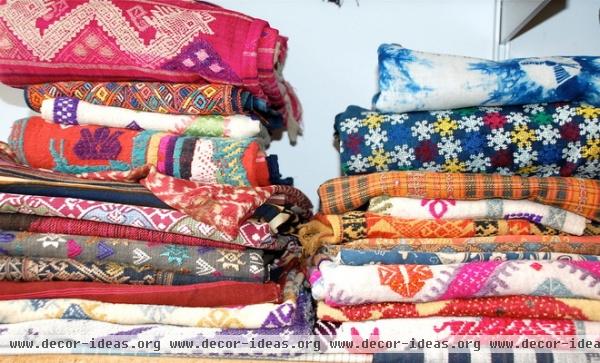
Technically, textiles are any cloths or other goods produced by weaving, knitting or felting; they can be made from natural or engineered materials.
Textiles simply cannot be matched for their almost infinite range of colors, patterns and textures. Whether vivid and strong like these …
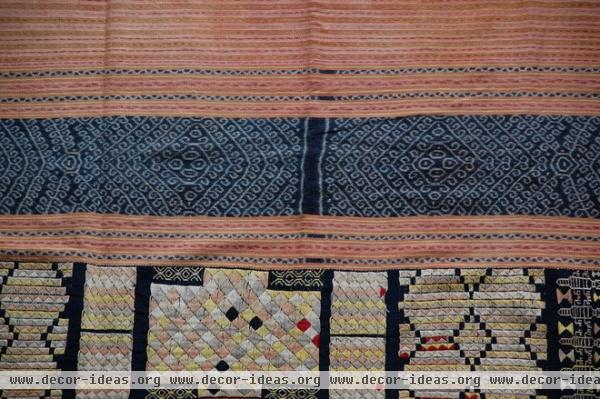
… or softly muted like these, there are multiple textiles that would solve any design dilemma.

Who would think you could simply hang a long piece of fabric from a rod and create this kind of impact? The strong color and soft pattern make the perfect foil for this largely neutral space.
Fabric: Forsa
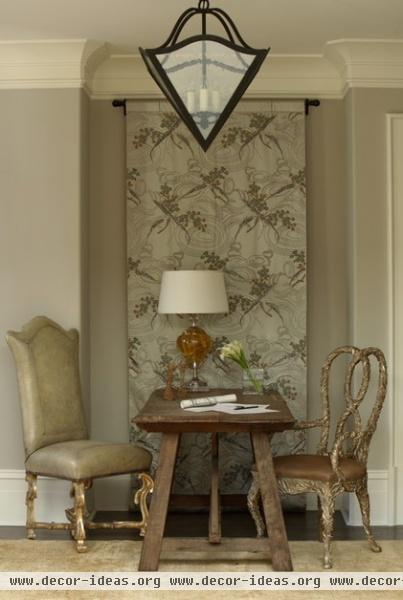
This hand-embroidered panel was made to order by Beaumont & Fletcher, notes designer Janie Hirsch. This time the textile is quiet and monochromatic, but the impact is just as effective.
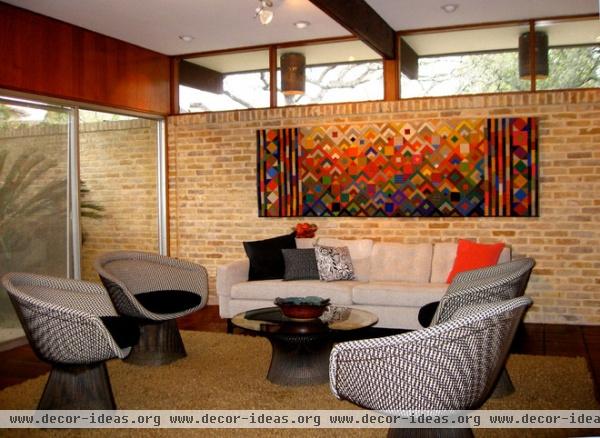
This impressive wall hanging was made by artist Pam Studstill from 1960s Knoll textile samples saved by the owner’s family.
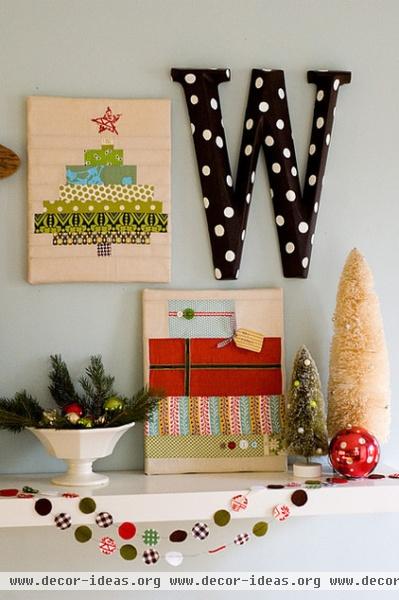
Here’s a completely different approach to a fabric collage: tiny textile remnants were used to produce charming and highly inventive wall hangings. The black “W” with white polka dots is a stellar addition, and is the key to why this grouping works so well.

Your favorite textile can also be stretched over a frame, as has been done here. You can use one piece of fabric or sew several pieces together to create as large an artwork as your wall and your frame will accommodate.
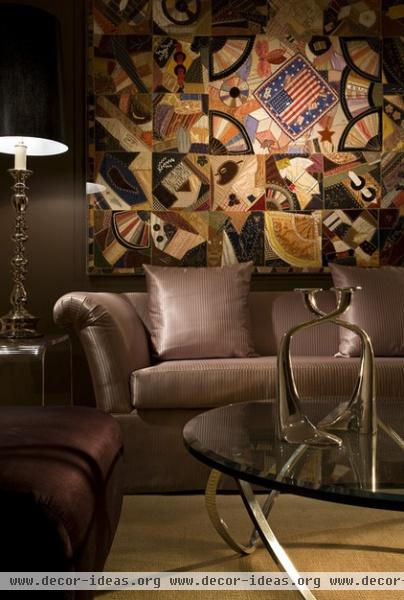
The humble quilt is a quintessential form of textile art. Quilts tell stories and relay information — both political and social. They are passed down through generations of families, and are no longer relegated to just the bedroom.
This stunning quilt is the focal point of the living room shown here, and is a feast for the eyes and the mind.

Then there are suzanis: embroidered fabrics from Central Asia that are usually quite large in scale. The oldest surviving examples date from the late 18th and early 19th centuries, but they were likely in use long before that. These distinctive fabrics were used to decorate bridal chambers and were worn as costumes for important events.
Suzanis are hot in the design world right now, so they can be pricey. But contemporary suzani patterns are available at much more affordable prices.
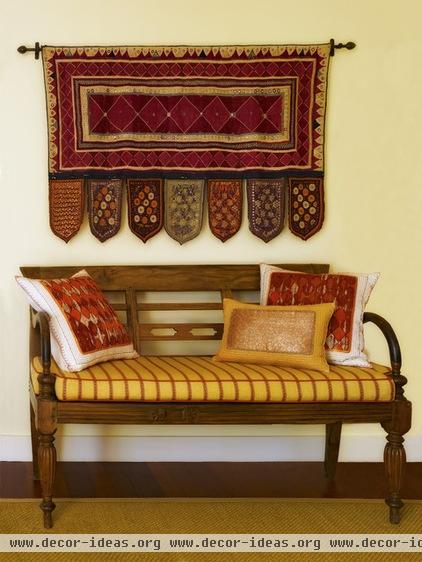
Antique textiles can tell our stories, share our histories and reveal our passions. Perhaps this piece was discovered under a pile of rugs in Marrakech, or its owner scoured flea markets until it called to her. Either way, its marriage of color and pattern makes an indelible design statement.
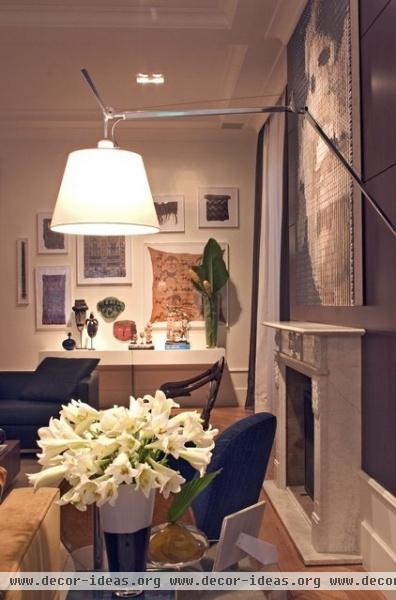
Textiles do not have to be large to be effective. When framed like these, a collection of small remnants can urge you to come closer and invite you to take an unhurried look.

Don’t limit yourself to by-the-yard goods or remnants. Textiles that have been made into clothing can be wonderful art as well. This uniform calls to me; I want to know the story behind it.
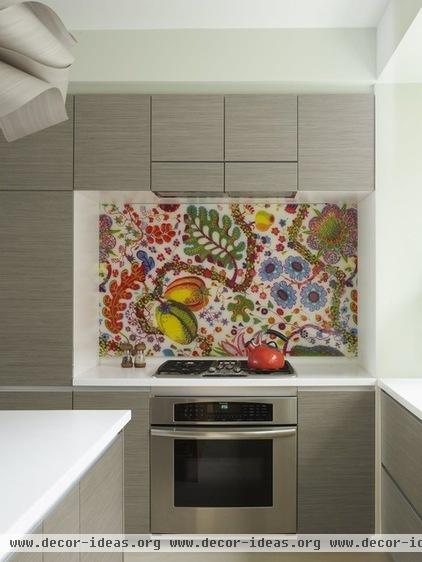
Fabric that is laminated behind glass makes a memorable and fabulous backsplash. Imagine doing this with an heirloom family textile, or to repeat a fabric used on curtains or upholstery elsewhere in the room.
Laminated fabrics, usually used for projects like tablecloths, umbrellas and handbags, can also be applied to the wall, but they aren’t appropriate for applications like this unless they’re secured behind glass.
I hope some of these ideas have inspired you, and that the next time you need something unusual but brilliant on your wall, you’ll think of textiles.
More: Hang a Tapestry
Show us: Have you created or decorated with handmade textiles? We’ll love to see a photo in the Comments below.
Related Articles Recommended












